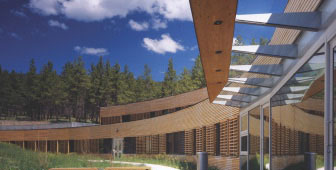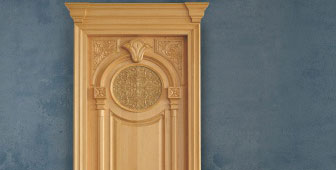This wood is incredibly easy to work and therefore is prized for applications such as joinery and carpentry, decorative panelling, furniture, mouldings and cabinetwork. Due to its durability, yellow cedar is used for shingles, posts, poles, marine pilings, small boat hulls, oars and paddles, water and chemical tanks, exterior door and window boxes. Structural grades are commonly used for exterior applications such as bridges, decking stairs and for landscaping. It is sometimes used in specialty construction projects such as temples and shrines.


